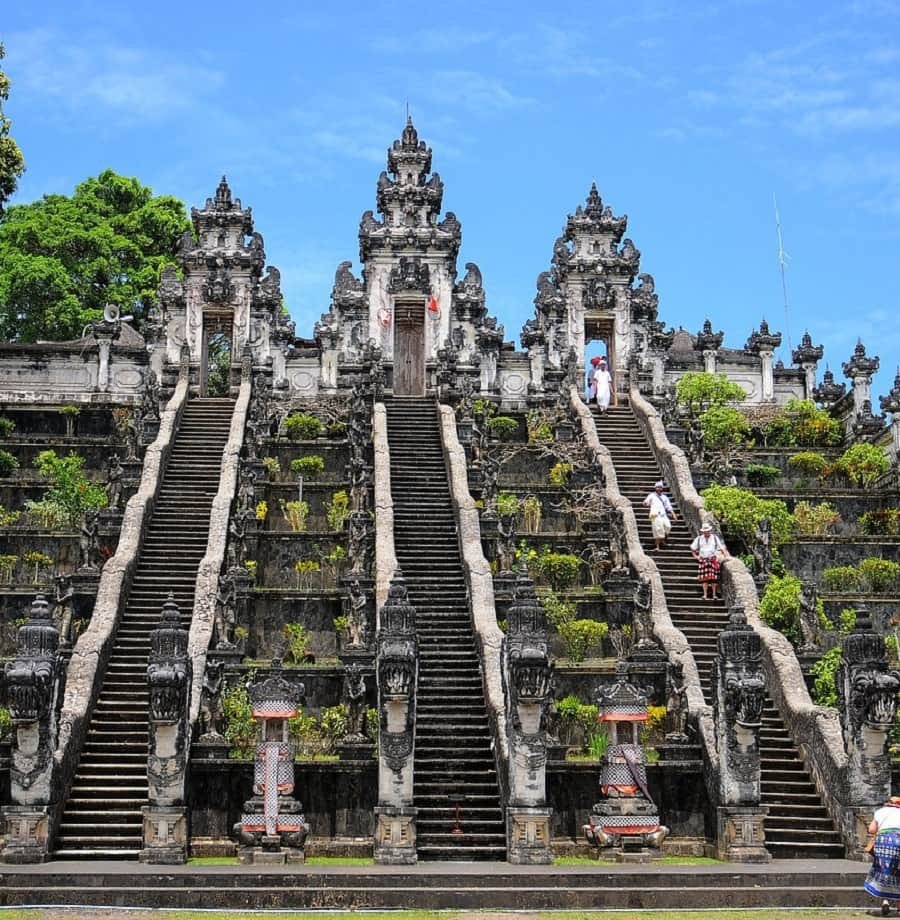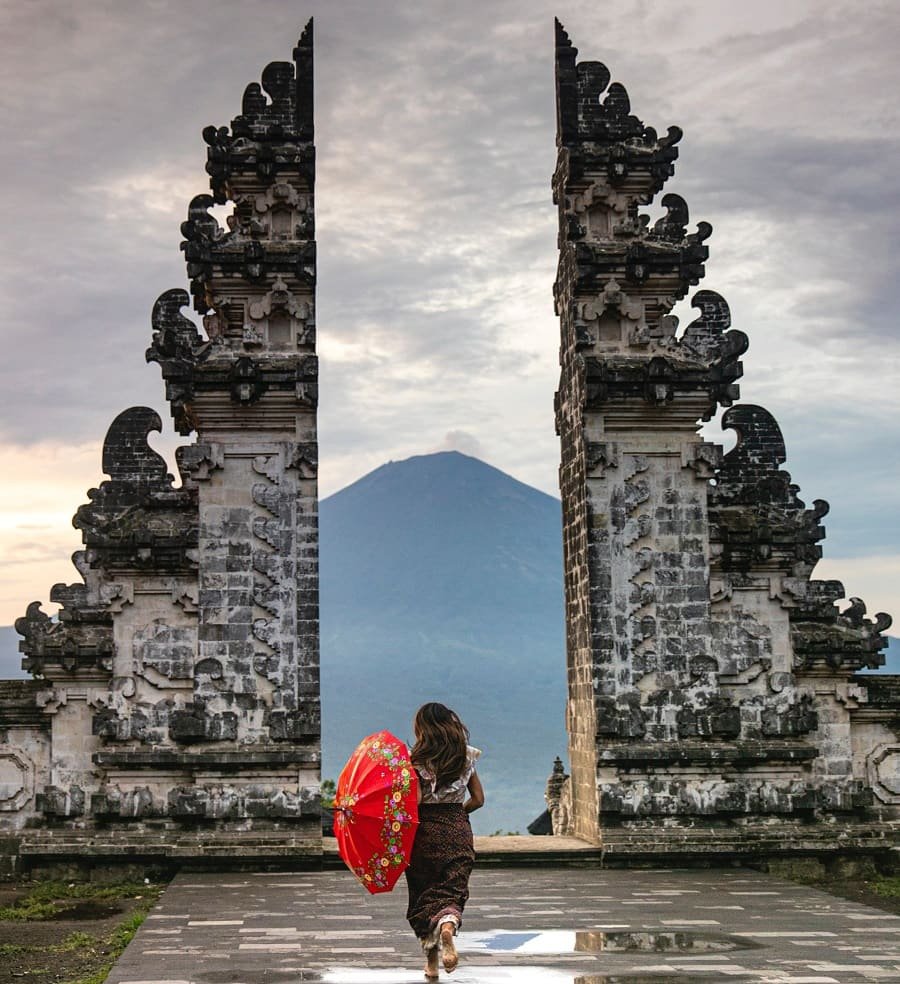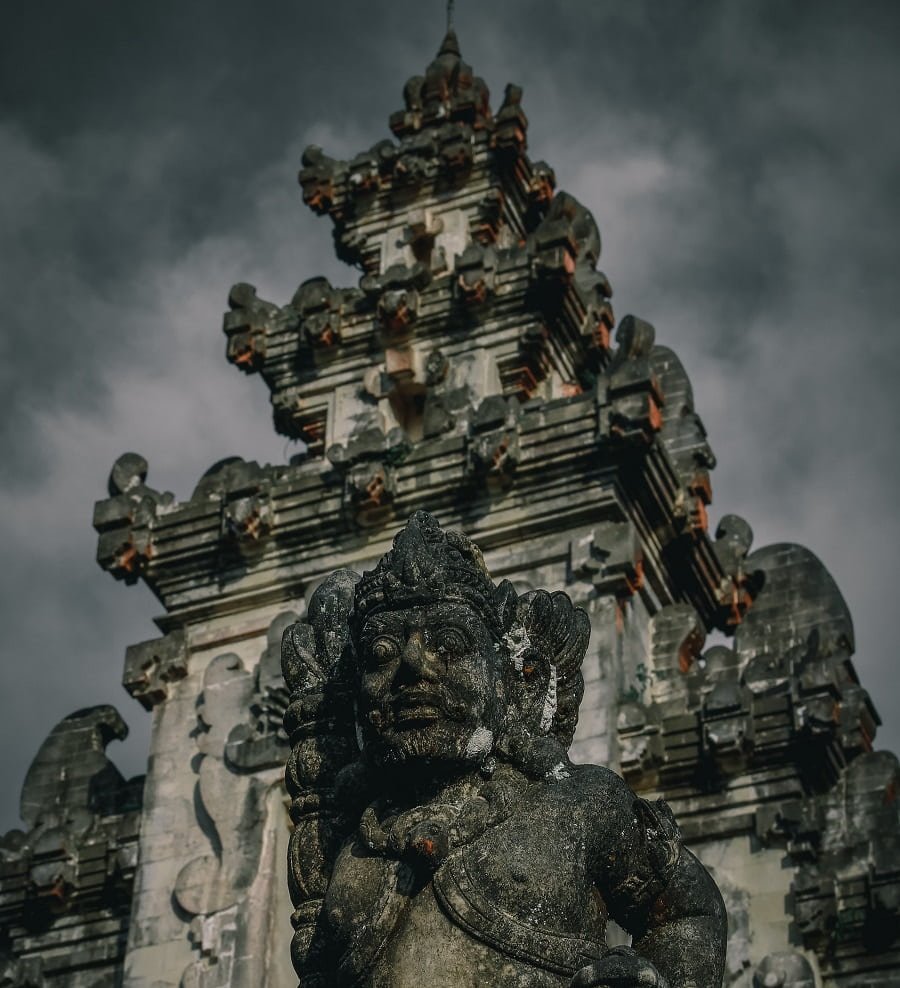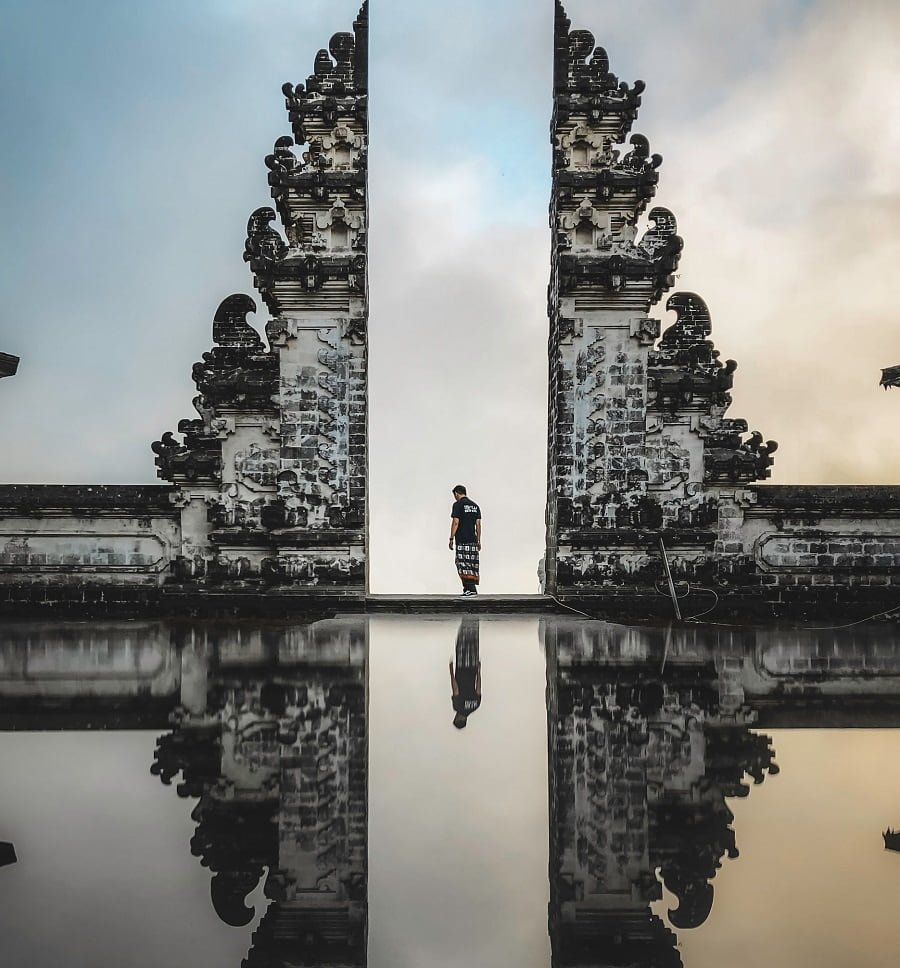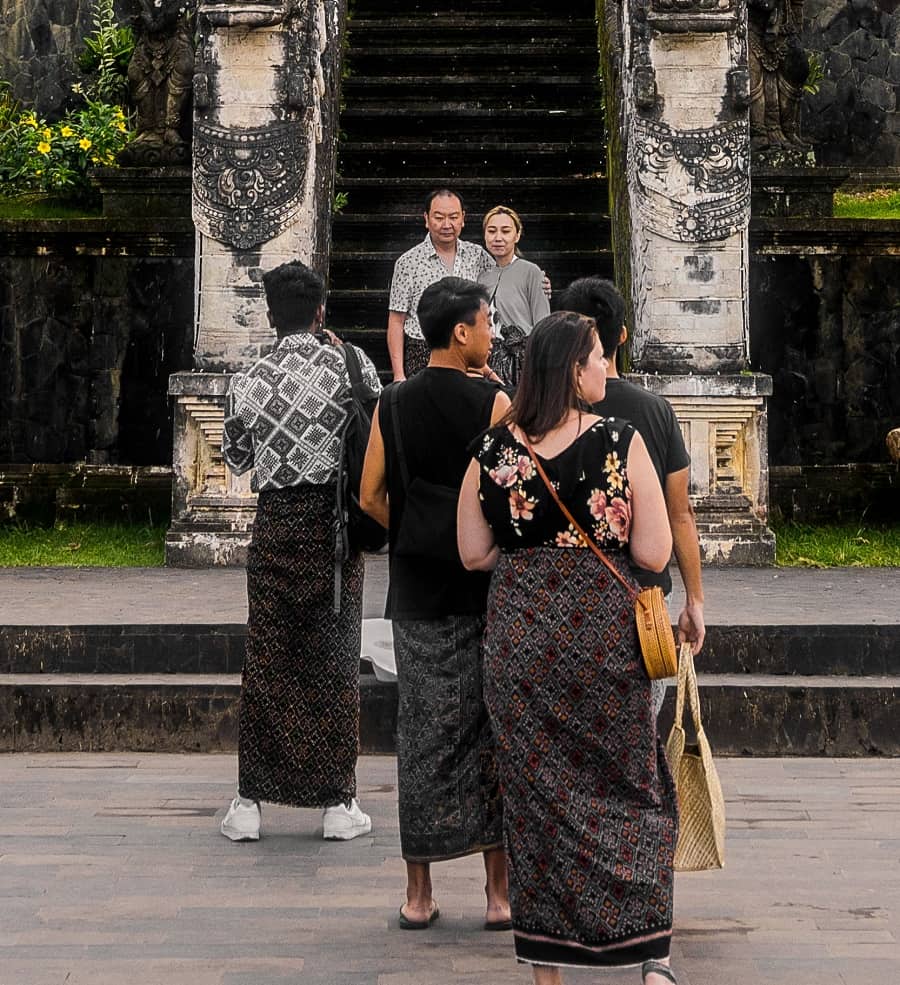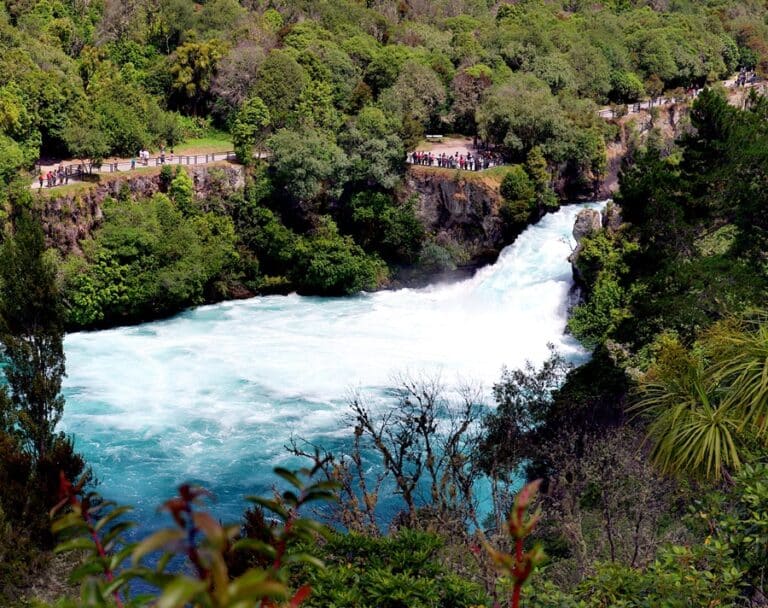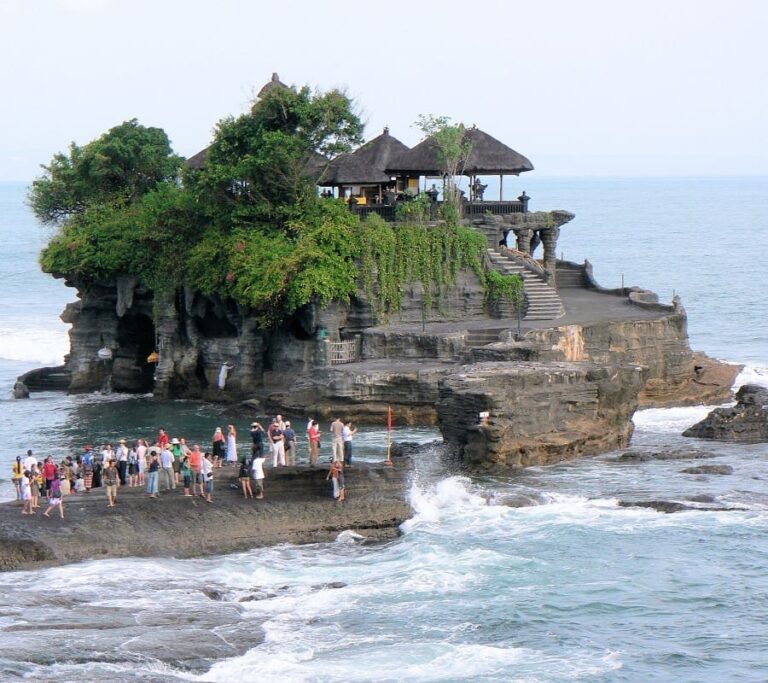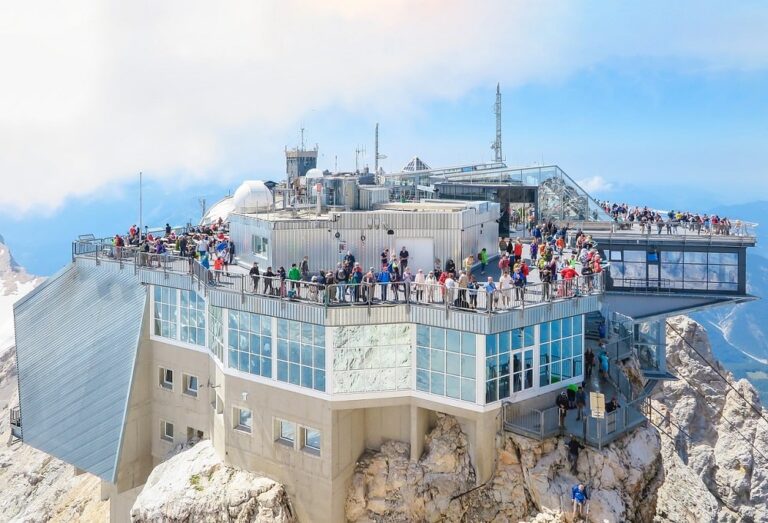Gates of Heaven Bali: The Beauty of Pura Lempuyang Temple
Last Updated on 4th December 2023 by admin
Bali, often referred to as the “Island of the Gods,” is a mesmerizing destination that lures travelers with its stunning landscapes, vibrant culture, and spiritual significance. Among the many captivating attractions that grace the island, the Gates of Heaven Bali, also known as Pura Lempuyang Temple, stands as a true icon.
As one of the oldest and most revered temples on the island, Pura Lempuyang Temple has a history that dates back centuries. The ancient Balinese architecture, with its intricate carvings and elaborate stone gates, showcases the island’s rich cultural heritage. This article delves into the enchanting beauty, profound spirituality, and the unique allure of Gates of Heaven Bali – Pura Lempuyang Temple, where heaven meets earth.
Pura Lempuyang Temple
Before discovering the “Gate of heaven“, we should know about the main temple which is the “Pura Lempuyang Temple”, also known as “Pura Lempuyang Luhur”, where this iconic gate stand with pride. It is a significant and highly revered Hindu temple complex located on the slopes of Mount Lempuyang in East Bali, Indonesia. Its location offers panoramic views of the surrounding landscapes, with the majestic Mount Agung dominating the horizon.
The temple’s name, “Pura Lempuyang Luhur,” translates to “The Highest Pura of Lempuyang,” signifying its esteemed status in Balinese Hinduism. This temple is one of the oldest and holiest temples on the beautiful island of Bali and holds great cultural and spiritual importance for the Balinese people.
Key features and aspects of Pura Lempuyang Temple include:
- Scenic Location: The temple complex is situated in a picturesque setting, surrounded by lush greenery and beautiful landscapes. It is known for its stunning views of Mount Agung, Bali’s highest and most sacred volcano, which is often framed by the temple’s iconic split gate.
- Split Gate: One of the most iconic features of Pura Lempuyang is its split gate, known as “Candi Bentar” in Balinese. The gate consists of two tall stone structures with intricate carvings, and visitors typically take photographs with Mount Agung framed perfectly between the gates.
- Sacred Stairs: To reach the main temple, visitors must climb a long stairway with more than 1,700 steps. This climb is considered a part of the spiritual journey and symbolizes the effort required to attain spiritual enlightenment.
- Temple Complex: Pura Lempuyang is not a single temple but a complex of several smaller temples. The main temple, Pura Lempuyang Luhur, is situated at the highest point and is the most significant among them.
- Religious Significance: The temple complex is dedicated to the worship of Ida Sang Hyang Widhi Wasa, the supreme god in Balinese Hinduism. It is a place of pilgrimage and prayer for the Balinese people, and it is believed that visiting the temple can bring blessings and spiritual purification.
- Rituals and Festivals: Pura Lempuyang Temple is a place where various Hindu rituals and ceremonies take place regularly, including offerings, prayers, and festivals. Balinese people from all over the island come to this temple to celebrate important Hindu festivals.
- Tourist Attraction: In recent years, Pura Lempuyang has gained popularity as a tourist attraction due to its stunning natural beauty and unique architecture. Visitors often make the trek to the temple to experience its spiritual ambiance and take photographs of the famous gate.
It’s important to respect the sacred nature of Pura Lempuyang Temple and follow any rules or guidelines provided by the temple authorities or local guides when visiting.
Gates of Heaven Bali
The “Gates of Heaven” in Bali typically refer to the iconic split gate (Candi Bentar) at the entrance of Pura Lempuyang Temple (Pura Lempuyang Luhur), as mentioned in the previous response. This gate is often featured in photographs with Mount Agung perfectly framed in the background, creating a breathtaking and visually stunning scene. The image is often referred to as “the Gates of Heaven” because of its dramatic and ethereal appearance.
Visitors to Pura Lempuyang Temple commonly line up to take pictures in front of this gate, which appears as though it opens to a heavenly vista. The reflection of the gate and the sky in the calm waters on the temple’s ground adds to the illusion of heavenly gates.
It’s important to note that the “Gates of Heaven” is not a separate destination or attraction in Bali but rather a popular photo spot within the Pura Lempuyang Temple complex. To visit this iconic site, travelers should make their way to Pura Lempuyang in East Bali and climb the stairs to the temple complex where the gate is located. As with any visit to a Balinese temple, it’s essential to be respectful, adhere to the dress code, and follow any guidelines provided by the temple staff or local guides.
Surrounding Area Around Pura Lempuyang Temple
The surrounding area of Pura Lempuyang Temple, located on the slopes of Mount Lempuyang in East Bali, is characterized by its lush natural beauty, serene landscapes, and several attractions worth exploring. Here are some of the notable features of the surrounding area:
- Mount Lempuyang: The temple is situated on the slopes of Mount Lempuyang, a dormant volcano. The mountain itself is a significant natural landmark in the area and offers opportunities for hiking and trekking for those who seek adventure.
- Rice Terraces: The region around Pura Lempuyang is known for its picturesque rice terraces, which cascade down the hillsides in intricate patterns. These terraces are not only stunning to look at but also an integral part of Bali’s agricultural heritage.
- Tirta Gangga Water Palace: Located nearby, the Tirta Gangga Water Palace is a beautifully landscaped royal water garden featuring pools, fountains, stone carvings, and lush gardens. It’s a popular spot for relaxation and a leisurely stroll.
- Ujung Water Palace: Another nearby water palace is the Ujung Water Palace, also known as Ujung Park. It’s known for its grand architecture and scenic pond surrounded by a network of walkways and bridges.
- Taman Ujung Sukasada: This historical park offers stunning views of the surrounding hills and coastline. It’s a great place to enjoy a leisurely walk and explore the beautifully maintained gardens.
- Local Villages: The surrounding villages offer a glimpse into traditional Balinese life. You may encounter friendly locals, see traditional houses, and experience the island’s rich cultural heritage.
- Scenic Drives: The journey to Pura Lempuyang from popular tourist areas like Ubud or Amed takes you through scenic countryside and winding roads, offering captivating views of the landscape.
- Craft Markets: Along the route to the temple and in the nearby villages, you’ll find local craft markets where you can purchase traditional Balinese arts, crafts, and souvenirs.
- Local Eateries: Sample Balinese cuisine at local warungs (small restaurants) in the area. You can enjoy traditional dishes such as nasi goreng (fried rice) and mie goreng (fried noodles).
- Rice Paddy Walks: Consider taking a walk through the surrounding rice fields to immerse yourself in the rural beauty of Bali and witness the traditional farming practices.
The surrounding area of Pura Lempuyang Temple offers a tranquil and scenic escape from the bustling tourist areas of Bali. Whether you’re interested in cultural exploration, nature, or photography, you’ll find plenty to enjoy and discover in this picturesque region.
The Spiritual Significance
Gates of Heaven Bali – Pura Lempuyang Temple holds immense spiritual significance for the Balinese people. It is considered one of the nine directional temples that protect the island from evil spirits and maintain the cosmic balance. The temple’s location on the slopes of Mount Lempuyang is believed to enhance its spiritual energy, making it a vital point of connection between the earthly and divine realms.
The Balinese Hindu community reveres Pura Lempuyang as a place of divine blessings and purification. Pilgrims and devotees from all walks of life visit the temple to seek blessings, perform sacred rituals, and receive guidance from the gods. The temple’s priests, known as “Pemangku,” play a vital role in upholding the spiritual traditions and facilitating the religious ceremonies conducted at Pura Lempuyang.
Best Time to Visit Pura Lempuyang Temple
The best time to visit Pura Lempuyang Temple in Bali, Indonesia, largely depends on your preferences and what kind of experience you’re seeking.
View this post on Instagram
Here are some factors to consider for different times of the day and year:
- Early Morning: Many visitors prefer to arrive at Pura Lempuyang Temple in the early morning to avoid the crowds and the heat of the day. Arriving at sunrise can be particularly magical, as you’ll have a chance to witness the stunning views and capture beautiful photographs of the “Gates of Heaven” with the soft morning light.
- Weekdays: If possible, plan your visit on a weekday rather than a weekend or during peak holiday seasons. Weekdays tend to be less crowded, offering a more serene and spiritual atmosphere.
- Dry Season: Bali has two primary seasons: the dry season (May to September) and the wet season (October to April). The dry season is generally the best time to visit Pura Lempuyang Temple because the weather is more predictable, and you’re less likely to encounter heavy rainfall, which could make the temple stairs slippery and muddy.
- Avoid Major Hindu Festivals: Pura Lempuyang Temple can become exceptionally crowded during major Hindu festivals, such as Galungan and Nyepi. While these can be fascinating cultural experiences, they may not be the best times for a tranquil visit.
- Be Mindful of Local Holidays: Check the local Balinese holiday calendar, as the temple may be busier on public holidays when locals have time off work.
- Midweek Morning in the Dry Season: If you’re looking for the optimal combination of smaller crowds, pleasant weather, and great lighting for photography, consider visiting Pura Lempuyang Temple on a midweek morning during the dry season.
- Check Sunrise and Sunset Times: If you want to capture the Gates of Heaven with the rising or setting sun, be sure to check the local sunrise and sunset times and plan your visit accordingly.
Remember that Pura Lempuyang Temple is a place of worship and reverence for the Balinese people, so it’s essential to be respectful at all times. Dress modestly, adhere to the temple’s guidelines, and maintain a quiet and contemplative demeanor while on the temple grounds. Additionally, it’s a good idea to check for any updates or changes in access conditions, especially if you plan to visit during the ongoing tourism developments in the area.
Capturing the Beauty
Beyond its spiritual significance, the Gates of Heaven Bali have become a popular photography spot, captivating visitors from across the globe. The famed “reflection” shot, where the temple’s gates appear to float on water, has graced countless social media feeds. Photographers and travelers alike are drawn to this spot to capture the ethereal beauty and share it with the world.
However, amidst the rising popularity and influx of visitors, it is essential to respect the sanctity of the place. When capturing photographs, visitors are encouraged to do so with mindfulness and reverence. Balinese locals appreciate when visitors show appreciation for their culture and spirituality.
Important Information Before Visit at Lempuyang Temple
Before visiting Lempuyang Temple (Pura Lempuyang Luhur) in Bali, Indonesia, there are several important considerations to keep in mind. This iconic temple is not only a popular tourist attraction but also a sacred site of worship for Balinese Hindus. To ensure a respectful and memorable visit
Certainly, here are those additional details added to the list of important information about Lempuyang Temple:
- Dress Code: Visitors are required to cover up with a sarong, both men and women, before entering the temple. It’s essential to dress modestly
- Respectful Behavior: Public displays of affection such as kissing are not allowed within the temple grounds. It’s important to maintain a respectful demeanor.
- Menstruation: Women who are menstruating are traditionally not allowed to enter the temple premises, although it can be challenging to enforce this rule strictly.
- Yoga Poses: Avoid performing yoga poses or other physical exercises within the temple area to maintain the sacred atmosphere.
- Refreshments: You can purchase coffee, tea, and snacks from vendors outside the temple complex. It’s advisable to bring some water and snacks, especially if you plan on climbing the stairs.
- No Drones: The use of travel drones is prohibited over religious temples, including Pura Lempuyang. It’s essential to respect this rule and the privacy of worshipers.
How to Reach Pura Lempuyang Temple?
Pura Lempuyang Temple is located in East Bali, Indonesia. Here are the general steps to get to Pura Lempuyang from the main tourist areas in Bali, such as Ubud, Kuta, or Denpasar:
- Start Your Journey: Begin your journey by heading to the eastern part of Bali. You can use a private driver, a taxi, or a rented scooter/motorbike. Keep in mind that the temple is quite remote, so it may take some time to reach, depending on where you’re starting from.
- Settle on a Transportation Option:
-
- Private Driver: Hiring a private driver is a convenient and comfortable option. You can arrange this through your hotel or a local tour operator. The driver will know the way and can provide valuable insights about the area.
- Taxi: You can also take a taxi from your location, but make sure to negotiate the fare with the driver before starting your journey. Ensure that the taxi has a working meter.
- Scooter/Motorbike: If you’re comfortable riding a scooter or motorbike and have the necessary license, you can rent one and drive to the temple. Just be aware that the journey can be long, and Bali’s roads can be challenging, so only choose this option if you’re an experienced rider.
- Navigation: Use a GPS navigation app or map to help you find your way to Pura Lempuyang. While the temple is a well-known tourist attraction, the roads in East Bali can be narrow and winding, so having directions is helpful.
- Parking: Once you arrive at Pura Lempuyang, there is typically a parking area where you can leave your vehicle. Be prepared to pay a small parking fee.
- Entrance Fees and Dress Code: Pay any entrance fees, and make sure you’re dressed appropriately for temple visits. If needed, you can rent a sarong and sash at the entrance.
- Climb the Stairs: To reach the main temple and the famous “Gates of Heaven,” you’ll need to climb a long staircase with over 1,700 steps. Take your time and enjoy the scenic views along the way.
Please note that road conditions, traffic, and travel times can vary, so it’s advisable to start early in the day to avoid crowds and to make the most of your visit to Pura Lempuyang Temple.
The Gates of Heaven Bali, or Pura Lempuyang Temple, is a testament to Bali’s profound spirituality and rich cultural heritage. With its awe-inspiring architecture, stunning landscapes, and spiritual significance, the temple leaves an indelible mark on all who visit. Whether seeking spiritual enlightenment or simply exploring Bali’s beauty, Pura Lempuyang Temple offers an experience that transcends the ordinary and connects with the divine.
As visitors pass through the Gates of Heaven Bali, they step into a realm where the spiritual and the natural worlds converge, leaving behind the distractions of modern life and embracing the serenity of a timeless sanctuary. Pura Lempuyang Temple stands as a reminder of the sacredness of life, the beauty of nature, and the enduring spirit of Bali’s cultural legacy.

